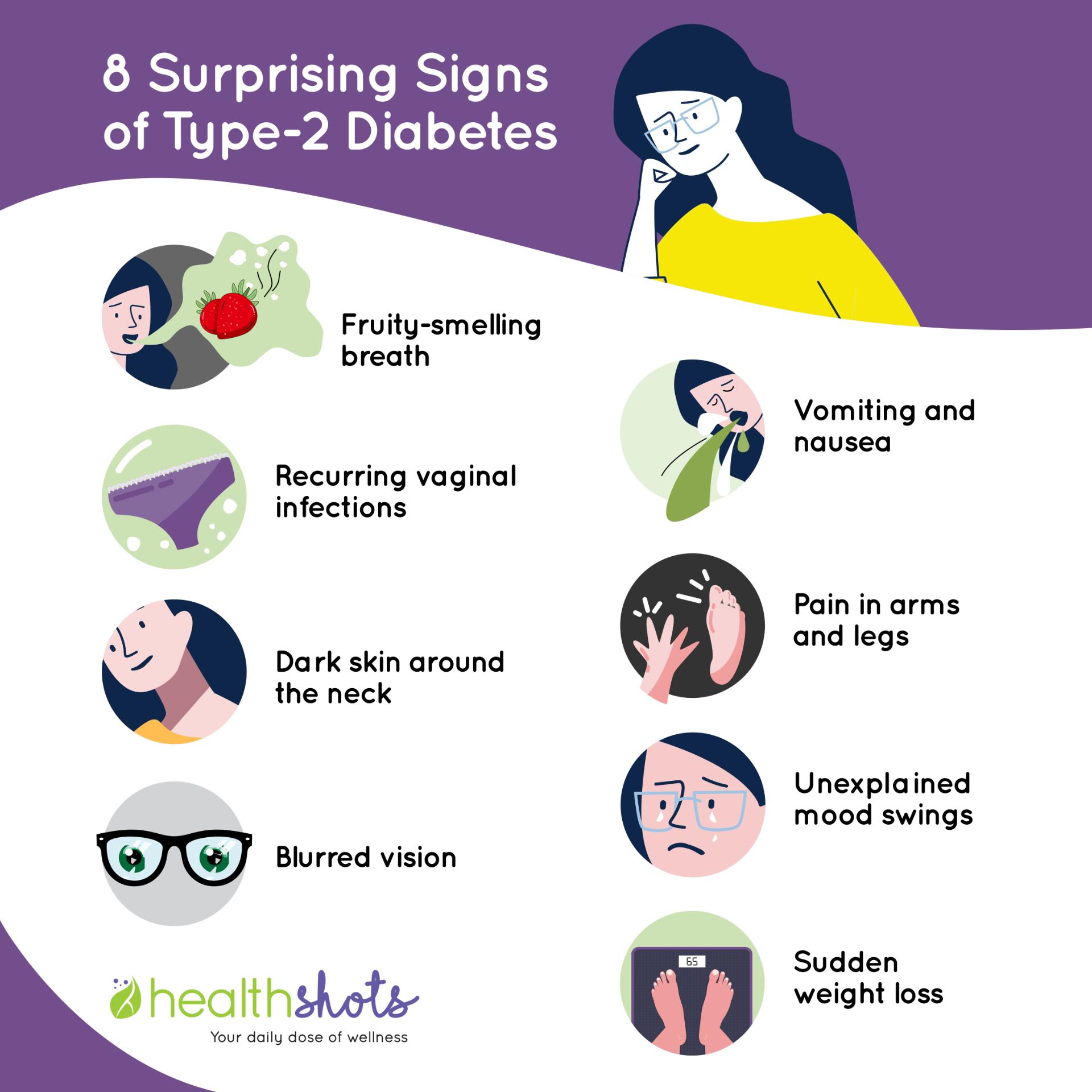Chat with ![]()
Chat with ![]()

As per the National Institute of Diabetes and Digestive and Kidney Diseases, diabetes is a disease that occurs when blood glucose (AKA blood sugar) levels are high.
Blood glucose is the body’s main source of energy and comes from the food we eat. Insulin levels play a major role in diabetes as it is a hormone made by the pancreas which helps glucose from food to get into our cells to be used for energy. So, diabetes impacts our body’s ability to make insulin, ensuring that glucose stays in the blood and doesn’t reach the cells.
This is a serious disease. In fact, as per the WHO (World Health Organization), about 422 million people worldwide have diabetes and 1.6 million deaths are directly attributed to diabetes each year. While the situation may seem grim, this is a manageable condition that can be mitigated by an overhaul of lifestyle and food choices.
The warning signs of diabetes could be mild enough for them to go unnoticed
This is especially true of type-2 diabetes (where the response to insulin is not adequate or sufficient, eventually leading to the halting of production of insulin). With type 1 diabetes (where the production of insulin comes to a stop), the symptoms manifest quickly and are usually more severe than type 2 diabetes.
Then there is the case of gestational diabetes, which occurs only during pregnancy. While in most cases, this type of diabetes goes away after the baby is born—it still puts the mother at risk of developing type 2 diabetes later in life.
Keeping an eye out on the signs of diabetes is therefore critical for effective management of the condition. And so, we have picked out a few common signs that will help you mitigate the risks arising out of this disease by getting timely treatment:
1. Strong urge to urinate often and feeling thirsty
Normally, our body reabsorbs glucose as it passes through the kidneys, but when diabetes increases the blood sugar levels, our kidneys may not be able to reabsorb all the glucose. This causes the body to make more urine than usual and hence, secrete fluids, thereby making you very thirsty as well.
2. Hunger and fatigue
Our body converts the food we eat into glucose that the cells use for energy. However, cells need insulin to absorb glucose. If the body doesn’t make enough or any insulin, or if the cells resist the insulin the body makes, the glucose can’t be absorbed by them. Therefore, the body will be left with no energy, making us feel hungrier and more tired than usual.
3. Blurred vision
Changing fluid levels in the body could make the lenses in our eyes swell up, thus impacting our focus and vision.

4. Dry mouth
With regards to dry mouth, since the body is using fluids to make urine, there’s less moisture available for other activities. Hence, you might experience dry mouth, which makes swallowing difficult.
5. Yeast infections and delayed wound healing
Yeast infections are a warning sign of diabetes. You see, yeast feeds on glucose and diabetes ensures that there is plenty available.
Slow or delayed healing of sores or cuts is another sign as high blood sugar levels can affect the blood flow and cause nerve damage that makes it hard for the body to heal wounds.
6. Weight loss and lack of appetite
Unplanned weight loss can be a sign of type-1 diabetes as it signifies that the body is not getting enough energy from food, thereby burning muscle and fat for energy instead.
Nausea and vomiting may also be signs of this type of diabetes as when the body resorts to burning fat, it makes ketones. These may build up in the blood, causing you to vomit and feel nauseous.
Also, listen:
If you have been just one of the above-mentioned signs, consult your doctor immediately. Blood sugar testing is quick and inexpensive—and regular screening can ensure that you are safe from this high-risk disease, especially if you have a family history of diabetes.
Get latest updates on health and wellness along with Preventive Care, Family Care, Reproductive Care, Self Care
